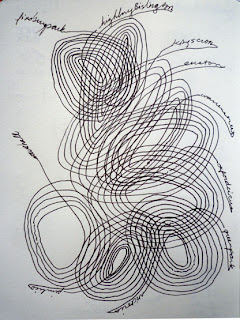



I started travelling on the Central line at Oxford Circus at 10:42, and after visiting West Ruislip and Ealing Broadway in the west


and Woodford and Epping in the (north) east


got back to Oxford Circus at 16:42. (That included time for a sandwich and a bit of shopping in Woodford.) From West Ruislip to Roding Valley, the stop a couple of minutes before Woodford, the journey time is 87 continuous minutes; straight to Epping, it's 81 minutes.
 "One legacy of the line's building is that the sections under the City were built to follow the geography of the streets above, rather than underneath buildings, to take advantage of the free wayleave offered by the government. As a result there are many sharp bends and curves on the track between St. Paul's, Bank and Liverpool Street. At Bank station, the Central line platforms are so tightly curved it is not possible to see one end of the platform from the other and the traditional "mind the gap" message is particularly stressed here."
"One legacy of the line's building is that the sections under the City were built to follow the geography of the streets above, rather than underneath buildings, to take advantage of the free wayleave offered by the government. As a result there are many sharp bends and curves on the track between St. Paul's, Bank and Liverpool Street. At Bank station, the Central line platforms are so tightly curved it is not possible to see one end of the platform from the other and the traditional "mind the gap" message is particularly stressed here."


































